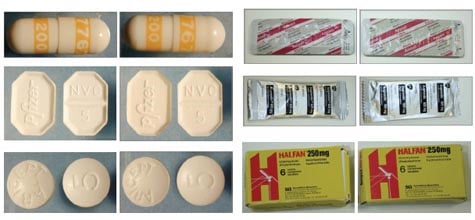Spotting a fake medicine can be extremely difficult, even for the experts. Sometimes it is only possible using forensic analysis. The reality is that counterfeiters are becoming increasingly sophisticated, as befits a criminal enterprise where the potential profits are huge.
For example, could you tell the difference between the fake medicine and the real one, in any of the photographs shown below?

If you guessed any of those correctly, then the chances are that it was exactly that – a guess. In fact, if this was real life, it could have been the best guess you ever made because, had you taken the fake medicine in the first photograph, you would now be digesting brick dust, boric acid, floor polish and lead-based road paint. needless to say, none of those ingredients are in the genuine medicine.
In each case above, you had the real pack or tablet as a comparison. Imagine if that hadn’t been the case. you would have had even less chance of identifying the fake. Incidentally, in every photograph, the fake is on the right.
How did you do?
Get it wrong, and not only might you not get the medicine you need. You might swallow a much bigger problem. The interactive table on this link, from the Partnership for Safe Medicines, shows some of the substances that have been found in fake medicines, and why you should take care to avoid them.
Of course it is scary, but if you are careful and use common sense, you are very unlikely to receive a falsified medicine. You can employ some simple counter-measures to monitor your medicines and you can become the last barrier to harm.
